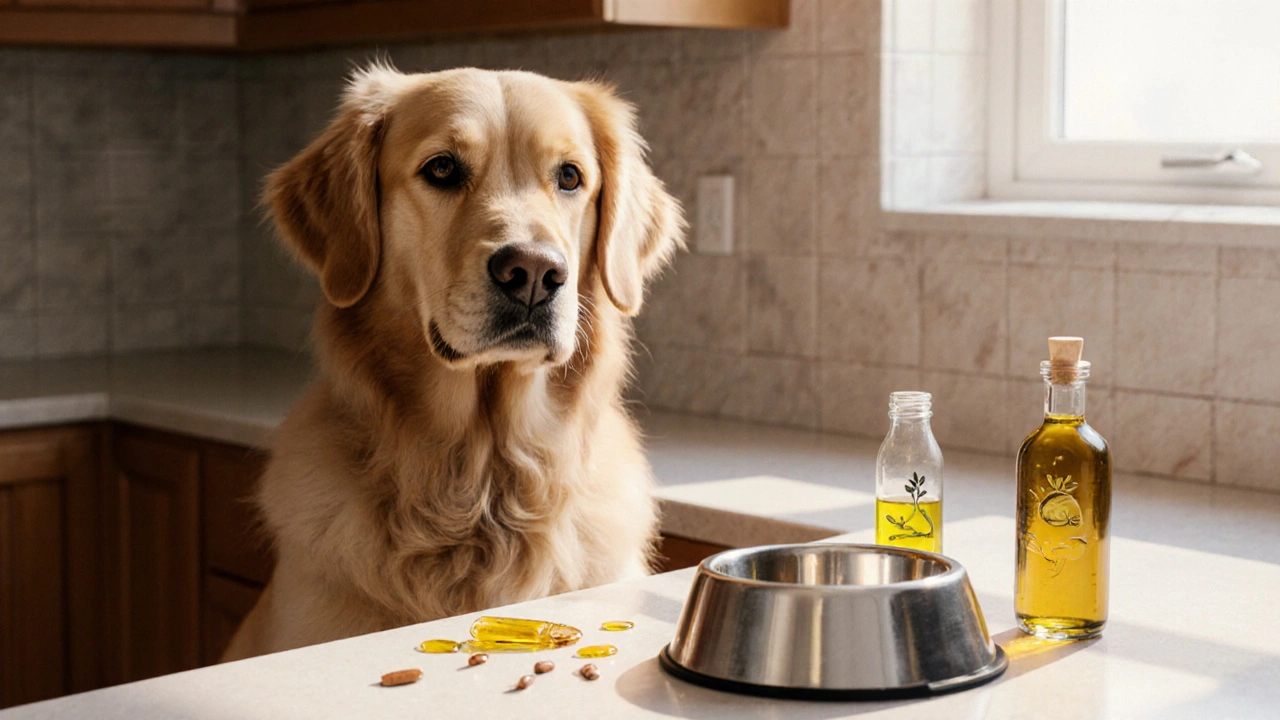Dog Joint Health: Keeping Your Pup Moving Pain‑Free
When talking about Dog Joint Health, the condition of a dog's cartilage, ligaments, and bones that affects mobility and comfort, most owners think of arthritis or the occasional limp. But it’s more than that – it’s a whole system that needs proper nutrition, movement, and routine check‑ups. Dog Supplements, nutritional products like glucosamine, chondroitin, and omega‑3 oils that support cartilage and reduce inflammation act as a first line of defense, especially for larger breeds that grow fast. Regular Canine Exercise, controlled activities such as walking, swimming, and low‑impact play that strengthen muscles around joints keeps the joint capsule flexible and the supporting muscles strong. Meanwhile, Weight Management, maintaining an ideal body condition through balanced diet and portion control reduces the load on weight‑bearing joints, and Veterinary Orthopedic Care, specialist services like X‑rays, joint injections, and physical therapy steps in when wear and tear become noticeable. In short, dog joint health encompasses cartilage maintenance, requires regular exercise, and is heavily influenced by a dog’s weight and the care it receives from a vet.
Key Factors for Healthy Joints
First, watch for early warning signs: stiffness after rest, reluctant jumps, or a change in gait. These clues often pop up before visible pain and give you a chance to act. If you spot them, a quick trip to the vet can confirm whether inflammation, torn ligaments, or early osteoarthritis are at play. Nutrition plays a massive role – foods rich in omega‑3 fatty acids and antioxidants help keep joint fluid lubricated. Adding a high‑quality glucosamine supplement can supply the building blocks for cartilage repair, but it’s crucial to choose a product formulated for dogs and follow the dosage guidelines. Next, balance activity with rest. Young pups love endless games of fetch, but over‑exertion can stress growing joints. Aim for short, frequent walks and incorporate swimming or tread‑mill sessions for low‑impact conditioning. Strengthening exercises, like hill walks or controlled uphill sits, target the quadriceps and glutes that act as natural shock absorbers. Lastly, keep the scale in check. Even a few extra pounds add significant pressure on hip and elbow joints, accelerating wear. Measuring food portions, limiting high‑calorie treats, and providing regular weigh‑ins keep the load manageable.
When problems do arise, modern veterinary orthopedic care offers many options beyond pain pills. Joint injections with hyaluronic acid or platelet‑rich plasma can slow degeneration, while laser therapy and therapeutic ultrasound promote tissue healing. Physical rehabilitation programs, often guided by certified canine physiotherapists, use balance boards, gentle stretches, and massage to restore range of motion. For dogs with advanced arthritis, mobility aids like orthotic braces or specially designed ramps can dramatically improve quality of life. All these tools combine to give you a full toolbox for keeping your dog active at any age. Below, you’ll find a curated mix of articles that touch on related topics – from grooming tips that prevent joint strain to travel advice that keeps your pet comfortable on the move. Dive in to discover practical steps, product reviews, and expert insights that will help you protect your dog’s joints today and well into the future.
Olive Oil vs Fish Oil for Dogs: Which Is Better?
Find out whether olive oil or fish oil is best for your dog's skin, coat, joints, and overall health, with dosage tips, safety warnings, and expert FAQs.






